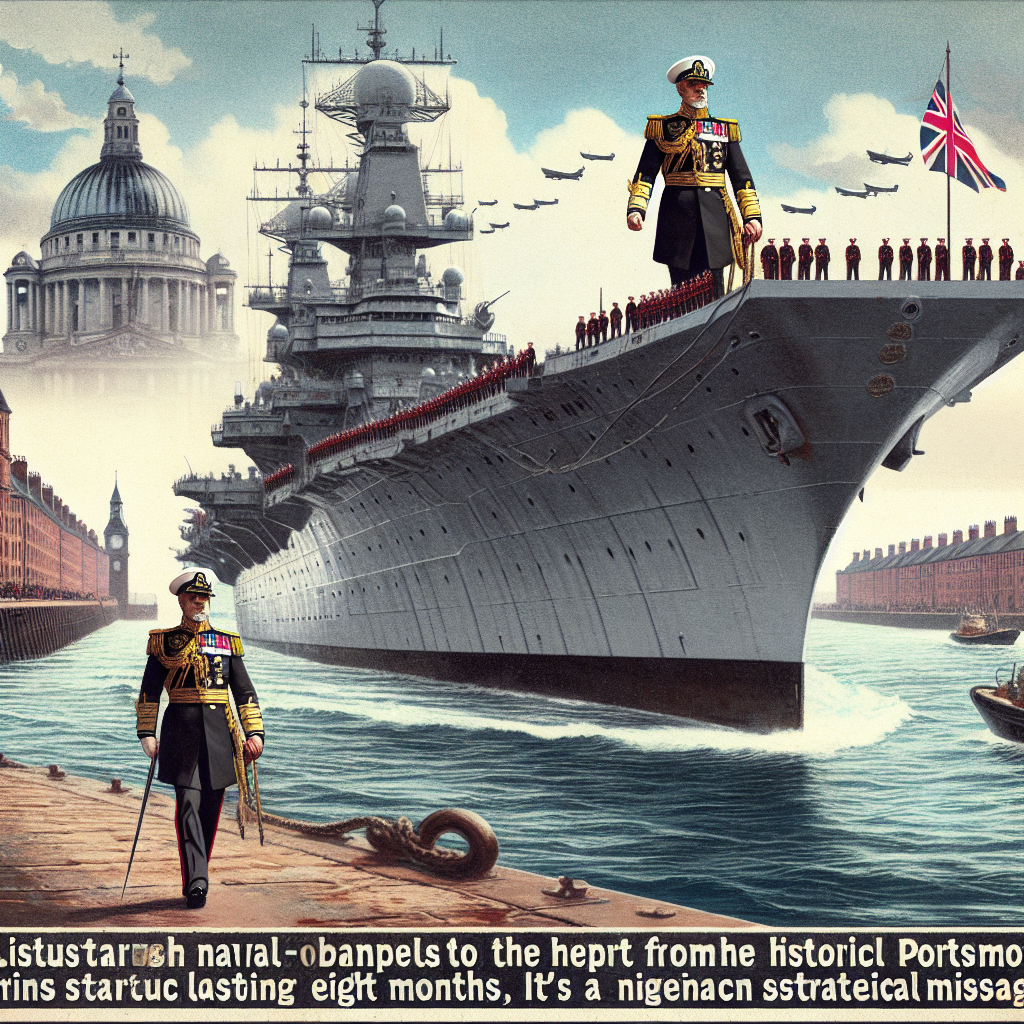The British Navy flagship, HMS Prince of Wales, set sail from Portsmouth on Tuesday to kick off the eight-month-long “Operation Highmast.” This operation is intended to send a strong strategic signal to the Chinese Communist Party.
Commanded by Rear Admiral James Blackmore, the deployment is described by the UK as not only a diplomatic and training mission but also a preparation for “any possible military action.”
The aircraft carrier strike group led by HMS Prince of Wales consists of approximately 2,500 personnel, including 2,100 British military personnel, along with warships from 13 countries including Norway, Canada, France, and 9 NATO allies, as well as NATO partners.
The UK announced that the entire cruise mission will traverse the Mediterranean, the Middle East, Southeast Asia, Japan, Australia, and is expected to engage in joint exercises, task operations, and diplomatic visits with around 40 countries.
Equipped with up to 24 F-35B stealth fighters, 16 Merlin and Wildcat helicopters, T-150 Malloy heavy cargo drones, and Puma tactical reconnaissance drones, the aircraft carrier illustrates the UK’s capability to independently deploy forces overseas and maintain maritime and aerial superiority.
Unlike the deliberate avoidance of the Taiwan Strait during the deployment of HMS Queen Elizabeth in 2021, the British Ministry of Defense has not disclosed the details of this route for the current deployment. However, the Navy has not ruled out passing through the Taiwan Strait, sending a strategic signal to China to uphold freedom of navigation.
Rear Admiral Blackmore stated, “If the order is given, I am prepared to execute combat missions at any stage.”
He emphasized that he is prepared for “all possible scenarios,” whether in terms of combat capabilities, defense cooperation, or coordination with allied partners.
“One of the objectives of this mission is to maintain international order,” Rear Admiral Blackmore said. “This operation is a guarantee of confidence for our partners and allies, and sends a signal to adversaries who may seek to create chaos on the global stage – that if needed, the UK possesses a carrier strike group with strength and credibility.”
This deployment comes at a time when China is escalating pressure on Taiwan. In early April, China conducted live-fire exercises near Taiwan, and in March, footage emerged of a “D-Day style” amphibious landing training, described by some media outlets as simulating the Normandy landings, demonstrating a continued escalation of its provocations towards Taiwan.
The departure of the British aircraft carrier strike group is seen by observers as a clear deterrent signal to China.
This deployment also carries strategic implications in response to former US President Trump’s call for the UK to play a more active role within NATO.
Blackmore stated that this operation demonstrates that the UK, as a core member of NATO, has the capability to stand shoulder to shoulder with the US at critical moments and even assume roles previously undertaken by the US when necessary.
Overall, the UK’s deployment of the aircraft carrier strike group to the Indo-Pacific region demonstrates London’s increasing focus on Asian security, as well as a more explicit and concrete response to Chinese expansionism on the global stage.

